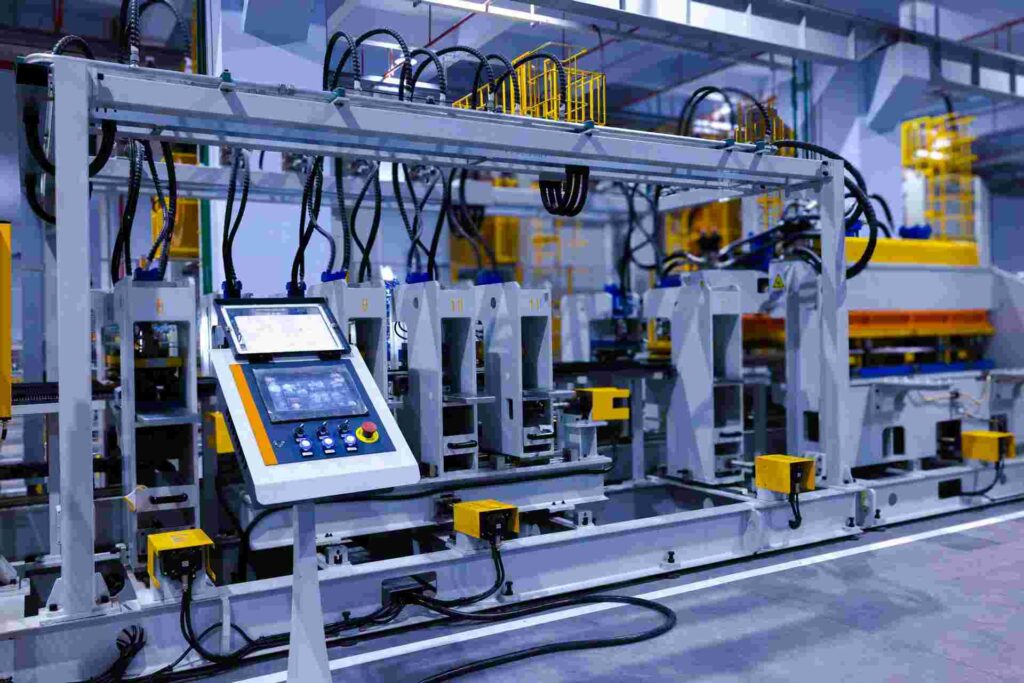What Is a Human-Machine Interface (HMI)?
While it’s become something of a routine, humans and machines interact in meaningful ways every day. From the cars we drive to the mobile devices in our pockets, human-machine interfaces are everywhere.
A human-machine interface (HIM) encompasses a broad range of applications and refers to a system in which humans interact with devices or machines. HIMs are designed to bridge the gap between human’s and technology’s capabilities, allowing complex systems to become more user-friendly through tools like touchscreens and voice commands.
HIMs make our lives easier, allowing us to be more productive and efficient in our daily lives. In this blog post, we’re going to take a closer look at human-machine interfaces to understand how they work, their uses and benefits, and how they fit into certain technologies like mobile devices and aiOla’s speech AI technology.
Human-Machine Interface Definition
A human-machine interface typically refers to a system that connects a human to a device through a screen. While HMIs can be applied to many use cases, it’s often used to refer to devices we interact with in industrial settings.
HMIs in industrial settings can come in different formats. They’re primarily used to interact with Supervisory Control and Data Acquisition System (SCADA) systems, allowing users to monitor and control machinery, streamline workflows, and make sure employees work safely. For example, factory workers use HMIs to adjust production parameters on machinery and diagnose issues, making it easier to interact with complex technologies through a screen rather than manually adjusting the machine.
How Does a Human-Machine Interface Work?
Human-machine interfaces operate through a few core components that make interaction between users and devices seamless. These core components include:
- Input devices: Tools like touchscreens, keyboards, buttons, or voice recognition systems allow users to input commands to the machine
- Output devices: Displays, speakers, or indicators allow machines to convey feedback, like data visualizations or alerts
- Software: Software programs process user inputs, interpret machine data, and present information in an accessible way
- Communication protocols: Specific channels allow data to flow between HMIs and other machinery or systems connected to it
For a workflow to get triggered, it starts with a user interacting with the input device. This might be starting a machine in a production line, for example. The software will interpret these commands and execute the desired action. During this process, data gets collected so the machine can let the user know if there is an unexpected issue, and if not, display outcomes on a screen for real-time monitoring and operation control.

Applications and Uses of Human-Machine Interfaces
HMIs are used in multiple industries to improve operations, give employees greater control over processes, and make the user experience more intuitive. The market for HMIs is growing and is expected to reach $11.6 billion by 2030 thanks to a greater demand for industrial automation equipment. Today, workers are using HMIs to control machinery, devices, vehicles, or even entire manufacturing plants. Here’s a closer look at a few different ways HMIs are used:
Manufacturing
- HMIs are used in manufacturing operations to control machinery, monitor production lines, and get more transparency into operations and data
- Operators use dashboards for diagnostics, troubleshooting, and improving and adjusting workflows
Energy and Utilities
- Power plants can apply HMIs for grid performance monitoring, load distribution, and detecting anomalies
- Renewable energy plants, such as wind or solar farms, rely on HMIs to track output and maintenance needs
Transportation
- HMIs are integrated into vehicle dashboards for navigation, performance updates, and accessing menu items and controls
- In aviation and shipping, HMIs help with control systems, safety monitoring, and navigation
Logistics and Warehousing
- HMIs support warehouse operations by facilitating inventory management, workflow automation, and order fulfillment
- Fleet management systems rely on HMIs to monitor vehicle conditions, route efficiency, and driver performance
Benefits of Using Human-Machine Interfaces
Human-machine interface solutions come with a range of advantages across many industries, improving the way users interact with systems. Here’s a look at the key benefits HMIs bring to organizations:
- Optimized industrial processes: HMIs allow for real-time monitoring and better control, allowing teams to reduce bottlenecks and standardize workflows
- Reduction in costly errors: By delivering accurate data and instructions, HMIs can reduce human errors and prevent issues that stem from miscommunication
- Enhanced visibility: Visual interfaces and interactive dashboards offer complex data in a way that’s accessible, leading to quicker and better decision-making
- Increased efficiency: HMIs provide automated alerts, monitoring, and user-friendly controls that lead to quicker response times and stronger productivity
- Improved usability: Interfaces can be customized to simplify systems for users, making them easier to adapt and execute tasks
- Better data utilization: HMIs collect, analyze, and present data in a way that supports informed decisions and workflow improvements
Upcoming Trends in Human-Machine Interfaces
As HMIs become more commonplace in multiple fields, the technology continues to advance. The way users interact with HMIs will also evolve, leading them to become more intuitive and perform more tasks. Some key trends to watch out for include:
- High-performance HMIs: These systems will be better equipped to handle more complex data and real-time insights, directing users to critical and time-sensitive information
- Multi-touch screens: Multi-touch screens make systems more flexible and accessible, allowing users to operate devices with two hands and use more complex gestures to access information quicker
- Remote monitoring: Operating an HMI remotely over the internet will allow users to get better visibility into operations from wherever they are, making it easier to manage teams spread out geographically
- Speech AI integration: The integration of voice commands and speech AI technology can enhance HMI usability, allowing for both hands-on and hands-free interactions, which can enable users to safely access settings or data in high-stakes environments
aiOla: Combining Speech AI With Advanced Human-Machine Interfaces
Like HMIs, speech AI technologies are also being adopted rapidly in different industries, helping organizations with everything from improving manufacturing productivity to standardizing fleet management processes. When paired with human-machine interfaces, speech AI technologies like aiOla can go even further.
aiOla is a speech AI technology that helps organizations capture critical data through speech and automate workflows using natural language. With aiOla, teams can work quicker, safer, and more intuitively by speaking commands instead of inputting them manually.
When paired with an HMI, aiOla’s speech AI technology can be even more effective, enabling cross-collaboration on more tasks. aiOla can trigger workflows on an HMI that may otherwise require physical interaction.
For example, an inspector on a manufacturing floor can stop production to inspect machinery just by speaking, and then while inspecting the machinery, ask the HMI questions to understand where there may be issues before they lead to large-scale problems. With aiOla, teams get more direct visibility into predictive maintenance for their machinery while simultaneously working with HMIs to access data and workflows.
The Future of Human-Machine Interfaces
From optimizing industrial processes to enhancing visibility into essential operations, HMIs are continuously evolving to meet modern demands. As these interfaces become more and more sophisticated, integrating with other technologies like speech AI, they’re changing how we work with complex systems and machinery, paving the way for safer workflows, more innovation, and greater productivity.
Book a demo with one of our experts to learn how aiOla can integrate with your existing human-machine interfaces.


